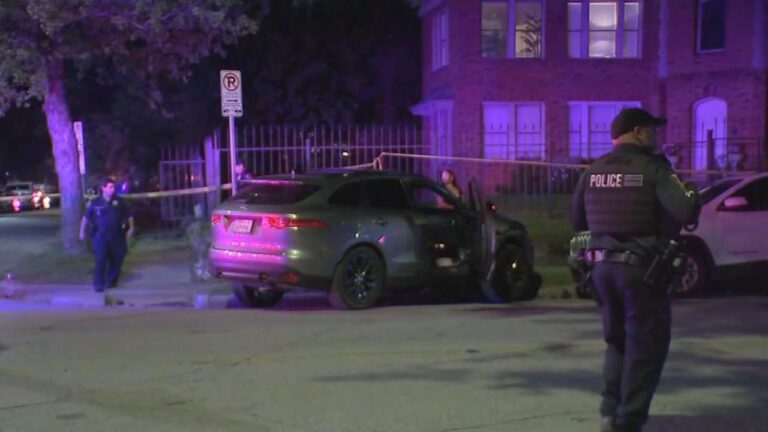Rising Crime in Houston’s Third Ward Sparks Concern Among Residents
Houston’s Third Ward, a neighborhood known for its rich cultural heritage and vibrant community life, is currently facing a troubling increase in criminal activity. Longtime residents are voicing deep worries about the rapid decline in safety, with some describing the current situation as the most severe they have ever experienced. This article presents firsthand perspectives from locals, analyzes recent crime data, and reviews the initiatives city officials are deploying to combat this growing issue.
Heightened Crime Activity Fuels Anxiety Among Third Ward Homeowners
In recent months, Third Ward residents have witnessed a noticeable surge in various criminal offenses, shaking their confidence in neighborhood security. Homeowners report frequent incidents ranging from vehicle break-ins to acts of vandalism and violent confrontations. Many express fear for their loved ones and frustration over what they perceive as delayed or insufficient police responses. Community forums have become increasingly charged, with residents demanding enhanced law enforcement presence and more robust crime prevention measures.
Primary concerns highlighted by the community include:
- Repeated thefts from vehicles, particularly during nighttime hours
- Drug-related activities occurring near schools and public recreational spaces
- Insufficient street lighting and lack of surveillance infrastructure
- Slow police response times despite numerous emergency calls
- Growing numbers of loiterers negatively impacting neighborhood morale
| Type of Crime | Incidents Reported (Past 3 Months) | Level of Concern Among Residents |
|---|---|---|
| Property Theft | 52 | High |
| Assault | 18 | Very High |
| Vandalism | 35 | Medium |
| Drug-Related Offenses | 25 | High |
Law Enforcement Steps Up Patrols and Community Engagement to Counter Crime
In light of the rising crime rates, Houston police have adopted a comprehensive strategy to enhance safety in the Third Ward. Patrol officers have increased their visibility, concentrating efforts on hotspots identified through recent crime mapping. These patrols operate around the clock, utilizing advanced tools such as mobile surveillance units and real-time data analytics to proactively address potential criminal activity.
Beyond enforcement, authorities are strengthening ties with local organizations to foster community collaboration. Key initiatives include:
- Neighborhood Watch Programs: Encouraging residents to actively participate in crime prevention by reporting suspicious behavior and sharing information with law enforcement.
- Conflict Mediation Workshops: Providing free sessions aimed at reducing interpersonal disputes and promoting peaceful communication.
- Youth Engagement Projects: Offering mentorship and recreational activities designed to divert young people from criminal influences.
| Patrol Approach | Focus Areas | Anticipated Results |
|---|---|---|
| Visible Patrols | Key intersections and parks | Immediate deterrence of crime |
| Technology Integration | Live surveillance and crime mapping | Quicker response times |
| Community Partnerships | Schools and nonprofit groups | Long-term reduction in violence |
Advocates Push for Upgraded Lighting and Surveillance to Enhance Safety
Community leaders and residents have united in calling for infrastructural improvements to combat the crime wave. They emphasize that better street illumination and the installation of security cameras are critical to deterring criminal acts and increasing residents’ sense of security after dark. These advocates are urging city officials to prioritize funding for these upgrades and to support expanded neighborhood watch efforts.
Proposed measures include:
- Replacing outdated streetlights with energy-efficient LED fixtures to improve nighttime visibility
- Installing surveillance cameras at strategic locations such as busy intersections and public gathering spots
- Ensuring regular maintenance to prevent outages and dark areas
- Launching awareness campaigns to encourage community vigilance and cooperation with law enforcement
| Initiative | Benefit | Implementation Timeline |
|---|---|---|
| LED Streetlight Installation | Enhanced visibility at night | 3 to 6 months |
| Security Camera Deployment | Crime deterrence and evidence collection | 4 to 8 months |
| Community Patrol Programs | Increased neighborhood vigilance | Immediate |
Comprehensive Solutions: Youth Programs and Economic Development as Crime Prevention Tools
Experts and community advocates agree that addressing crime in the Third Ward requires a holistic approach that extends beyond policing. Expanding youth-focused programs is essential to provide constructive alternatives for young residents, reducing their vulnerability to criminal influences. Programs such as after-school clubs, mentorship opportunities, and vocational training have demonstrated effectiveness in lowering juvenile crime by fostering engagement and skill development.
Simultaneously, targeted economic revitalization efforts are crucial. Initiatives that promote job creation, affordable housing, and support for local entrepreneurs can alleviate poverty-related factors that often contribute to crime. By investing in the community’s economic health, these strategies aim to build a safer, more prosperous environment for all residents.
- Youth mentorship and leadership programs to guide at-risk individuals
- Career readiness workshops to equip young people with marketable skills
- Small business grants and loans to stimulate local economic growth
- Community development projects to improve housing and public spaces
| Approach | Expected Impact | Examples |
|---|---|---|
| Youth Engagement | Reduction in youth-related offenses | After-school programs, summer leadership camps |
| Economic Investment | Higher employment rates and economic stability | Job fairs, microloan programs for startups |
Conclusion: Collaborative Efforts Needed to Restore Safety in the Third Ward
As crime rates continue to rise in Houston’s Third Ward, residents’ concerns about safety and quality of life intensify. The community’s call for action is clear, urging local authorities to implement effective, multifaceted strategies that combine law enforcement, infrastructure improvements, and social programs. The evolving situation demands ongoing collaboration between police, civic leaders, and neighborhood members to foster a secure and thriving environment. Updates on these developments will be provided as new information emerges.




